How To Clean A P-trap In Shower
The Most Effective Mode to Clean a P-Trap
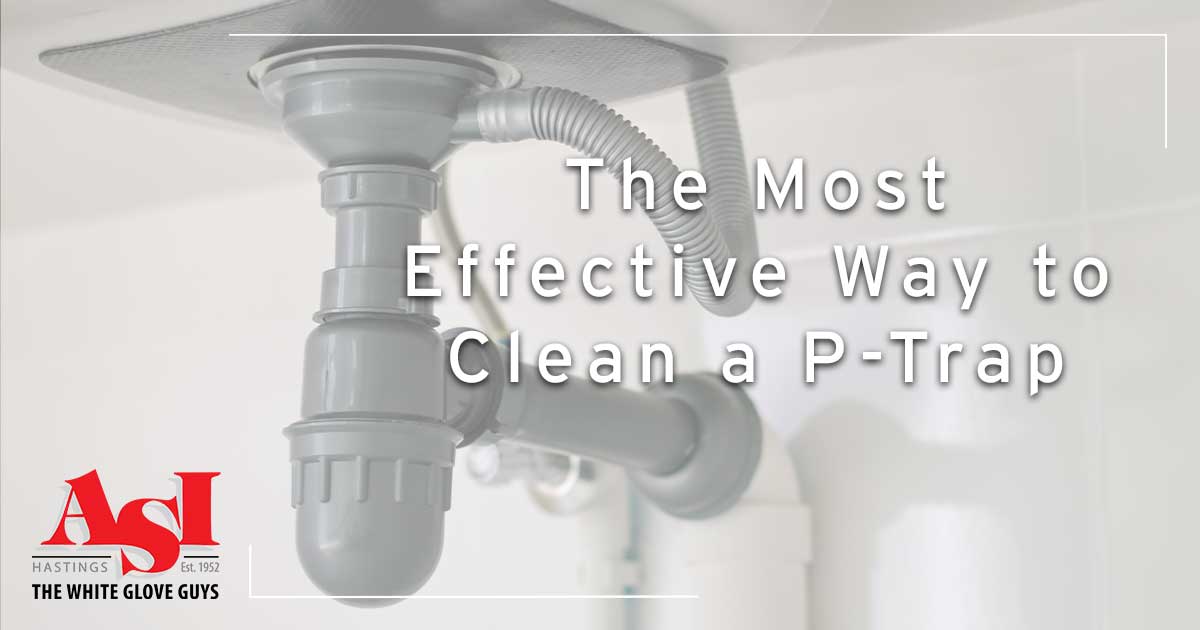
At ASI, we're very much in the campsite of leaving hard jobs to the professionals. When a job is easy plenty to practise on your own, we believe in helping you through it. One of the easiest, and near productive, DIY plumbing fixes is emptying the P-trap. Here are our steps for the best style to make clean a P-trap.
What is a P-Trap?
Appliances and fixtures that collect and drain water usually have a u-shaped pipage underneath it. This u-shaped pipage is often referred to every bit a P-trap, brusque for plumbing trap.
Near any basin that collects water has a u-shaped pipe underneath it. This pipe is sometimes called a "plumbing trap," or P-trap.
The precipitous drop in the u shape creates a gravity bulwark that stops undesirable odors and gasses from coming back upward through the pipes.
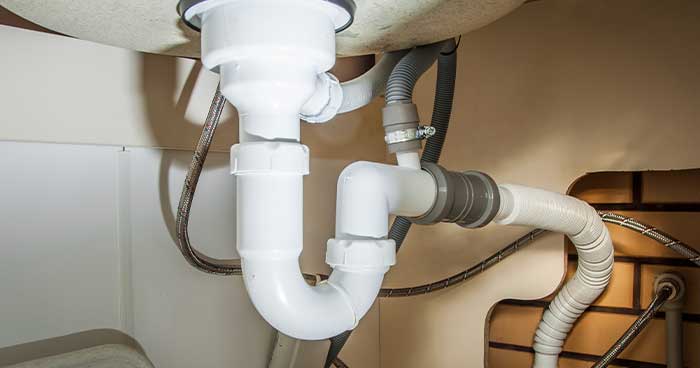
A major reason the P-trap works is because it is filled with water. This water acts as a protective barrier between the stinky sewer line and you clean home.
When a P-trap's water empties, it tin can pause the odor seal. This happens in sinks that don't traditionally encounter a lot of apply. Think utility sinks or annihilation in a guest bath.
When this happens, outset run the water for x-15 seconds. This should literally wash away the aroma and create a new bulwark.
Despite this, in that location are times when running the water won't help. This is when you can follow the steps below to clean a P-trap.
Step past Step: How to Clean a P-Trap
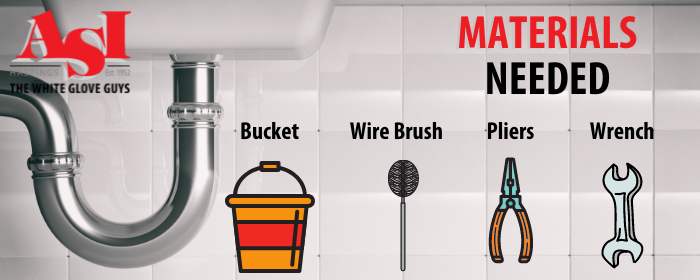
Materials Needed:
- Bucket – Catch all the water and other debris in your pipes
- Flexible Wire Brush – Not bad for getting to the bottom of the curved trap.
- Pliers or Adjustable Wrench – Sometimes, the nuts are a trivial hard to crack.
Stride 1: Turn off the Water Faucet
One of the things that makes cleaning the P-trap piece of cake is that you don't demand to shut off the water to the whole house. Just make sure the sink isn't running.
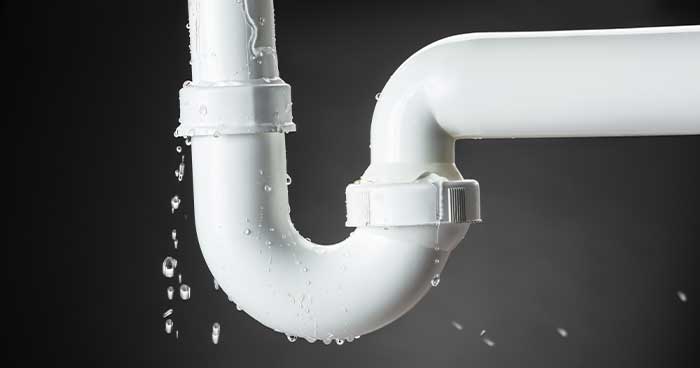
Fifty-fifty though the h2o is off, there will still be a mess of water—and other debris—in the P-trap. This is why nosotros recommend putting the bucket nether the trap before you fifty-fifty showtime to remove it.
Step 2: Remove the P-Trap
This is where the magic happens. When information technology's time to remove the P-trap most people just need their easily and a washcloth.
Merely concur the connecting pipe to keep it in place, and unscrew the nut holding the P-trap in identify. Do the same to the other side and you lot should be able to remove the P-trap.
Call up that even as shortly as you loosen the nuts, water will commencement to come spilling out from the piping. It all depends on how total the P-trap is.
Carefully remove the P-trap, dump its contents into the bucket, and movement on to footstep three.
Step 3: Clean the P-Trap
Cleaning the P-trap is an incredibly piece of cake job. Start by manually pulling out anything visible and dump that into the bucket or a trash bin.
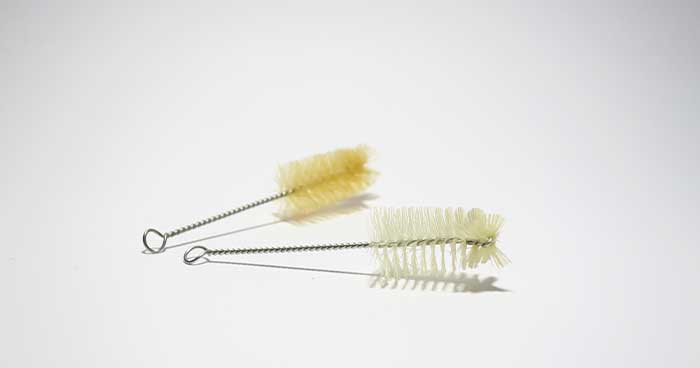
Next get the flexible wire brush, moisture information technology, and get to work. Simply push the brush through the pipage to remove anything that may be stuck inside.
Make clean the piping until in that location is no more than residue sticking to the brush.
Stride 4: Put Everything Dorsum Together
Now that you accept a squeamish and clean pipe, it's fourth dimension to put everything back together. This procedure is just equally easy as taking information technology all apart.
Brand certain to line upwardly the piping correctly and spiral the nuts back into identify. But know, the long end of the pipe faces the front and brusque finish is in the dorsum.
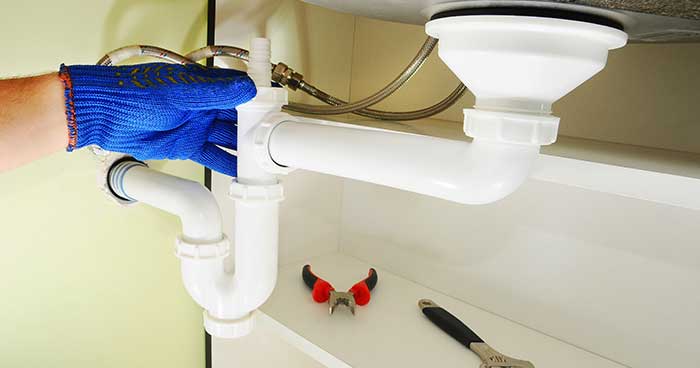
Now, spiral the nuts back on. Don't push button too hard, but you may demand the pliers or wrench to brand sure everything is sealed.
Notwithstanding, we're not done however. You lot still need to test the pipage.
Run the water for fifteen seconds and watch the P-trap. No leaks mean you're good to end and clean everything up.
Water coming from the nuts mean yous may need to tighten them or reinforce the seal with Teflon record.
How Frequently Should I Clean my P-Trap?
At ASI, our plumbers recommending cleaning your P-trap once every 3 months. This helps go on your line clear water freely flowing.
Dealing with annihilation bigger? Time to phone call the plumbing experts at ASI, the White Glove Guys.
Source: https://www.asiheatingandair.com/info/the-most-effective-way-to-clean-a-p-trap/
Posted by: geiersquou2000.blogspot.com


0 Response to "How To Clean A P-trap In Shower"
Post a Comment